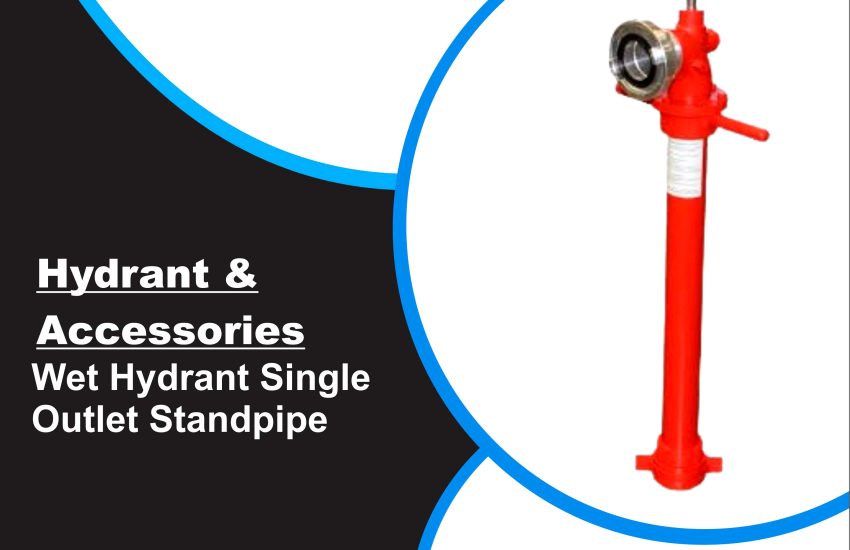Wet Hydrant Single Outlet Standpipe serves as a critical component in external fire protection systems, offering immediate access to high-volume water supplies during emergencies. Ideal for industrial, commercial, and municipal settings, these hydrants ensure rapid firefighting support when internal fire systems may not be sufficient.
Product Description: Wet Hydrant Single Outlet Standpipe
The Wet Hydrant Single Outlet Standpipe is engineered for performance, reliability, and durability. This single outlet wet standpipe features a simple above-ground construction, ensuring all mechanical components are easily accessible for maintenance and emergency use. Commonly installed outside buildings, these hydrants act as a supplemental water source, providing enhanced safety during fire incidents.
Technical Specifications of Wet Hydrant Single Standpipe
| Specification | Description |
|---|---|
| Model | AAAG M193 |
| Hydrant Body Flanges | Mild Steel – IS: 1239 (Heavy Duty), Mild Steel – IS: 2062 (Welded) |
| Valve Body | Gun Metal – IS: 318 LTB-2 Optional: Stainless Steel – IS:3444 Gr.I or IS:3444 Gr. IV |
| Test Pressure | 23 Bar |
| Inlet Flange | 80 NB (3″), ANSI B 16.5, 150# |
| Hydrant Outlet | 75 NB (3″), ANSI B 16.5, 150# Flange Compatible with AAAG Hydrant Valves |
| Finish | Red Polyurethane Coating |
Key Features of Wet Hydrant Single Standpipe
- ✅ Above-Ground Design: All mechanical components are easily accessible for quick maintenance and inspection.
- ✅ Robust Construction: Built using high-quality mild steel and gun metal, with optional stainless steel for enhanced corrosion resistance.
- ✅ High Pressure Tested: Withstands up to 23 Bar, ensuring dependable operation in emergency scenarios.
- ✅ Standard Flange Connections: Matches standard ANSI B 16.5 dimensions, making installation seamless and compatible with existing systems.
- ✅ Durable Finish: Coated with red polyurethane for visibility and long-term protection against environmental conditions.
Applications
The AAAG M193 Wet Hydrant Standpipe is suitable for:
- Industrial complexes
- Commercial buildings
- Refineries and chemical plants
- Municipal infrastructure
- Large residential projects
- Fire brigade connections


